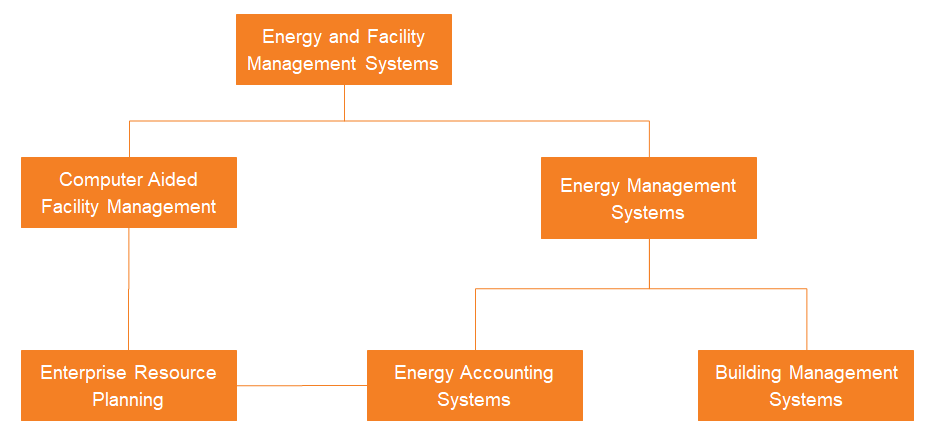There is a multitude of platforms offering different aspects of energy management for large energy users from Building Management Systems (BMS), Energy Management Systems (EMS), Energy Accounting Systems (EAS) and Energy and Facility Management Systems (EFMS). With the advent of Power of Choice[1] on 1 December 2017 across most Australian states and the rise of the Internet of Things (IoT), the number of smart meters and energy-using pieces of equipment connected across the country will increase significantly. At the same time, platforms are proliferating to match the increasingly varied needs of the owners of these devices.
While more and more organisations are becoming aware of the power of smart devices coupled with Big Data analytics, we see companies struggling to understand just how different platforms work, interact and how to select the platforms most aligned to their organisational goals. In this article we provide an overview of these systems and the key considerations that need to be factored into the selection of a platform.

What are the critical points of difference across the systems on offer?
A simplified hierarchy[2] of how key energy management systems connect to each other is shown below.
These systems can be provided by a Cloud based platform or a standalone software package installed on a local server or desktop computer. BMS systems are likely to be local installations or at least have local backups as continuous control of local equipment is required. Other systems are more likely to be Cloud platforms for easy consolidation of different assets as they are highly extensible and easy to access. We now consider the features of the different layers outlined in the diagram below.

Figure 1: Simplified hierarchy of key energy management systems interconnection
Energy Accounting Systems (EAS) and Enterprise Resource Planning (ERP): how they work together
EAS platforms measure, analyse and report energy costs and associated consumption at the organisational level. These platforms incorporate utility billing data and other variables such as area, temperature, production, budgets and forecasts for purposes such as monitoring environmental impacts and reducing energy costs. An EAS is often integrated with an organisation’s ERP to allow management of energy costs in relation to other enterprise resources. An ERP collects, stores and manages data from various business activities (such as manufacturing, operations, purchasing, sales and accounting) and allows for useful information to flow to stakeholders.
The Building Management System (BMS): offering control
The BMS provides direct control of building equipment such as heating, ventilation and air-conditioning (HVAC), lighting and access control. There is an array of systems available to Australian companies which communicate through a variety of protocols (mostly open but a few remain closed). They may be incompatible for older legacy systems but most systems installed since 2010 should communicate through more than one protocol to interface with equipment from a range of manufacturers. The BMS can be utilised hand in hand with the EAS to help organisations monitor and quantify energy efficiency savings; not only from the perspective of consumption but also to have visibility of the cost savings.
The role of an Energy Management System (EMS)
EMS is a broad umbrella term for platforms which provide energy management applications such as utility bill tracking, sustainability reporting, managing BMSs, demand response and fault detection to name a few. Because EMS, BMS and EAS functionalities are so closely entwined, you often find combined platforms offering functions as different modules instead of separate systems. A relatively recent innovation in EMS platforms comes from using a data analytics engine to continuously and predictively fine tune buildings.
The EMS market is complex due to the broad number of applications available. Most platforms provide slightly different subgroups of applications to distinguish themselves from competitors.
An overarching system: the Energy and Facility Management System (EFMS)
EFMS is an even broader umbrella which interfaces and controls all the platforms below it as well as providing additional applications such as work orders, facility bookings, building and workplace optimisation and overall reporting. Most EFMS are modular in nature as they need to tailor each to a different organisational need. For example, a property management company might not need a facility booking functionality while it is paramount for a large university. The EFMS also interfaces with platforms such as Computer Aided Facility Management (CAFM).
So there is a lot of choice in the market! How do you go about making the best decision for your organisation?
Three initial steps to take when choosing a platform
Energetics’ recommends that you take the following steps:
- Identify your organisation’s purpose
- Do some research into systems
- Identify the core users and platform managers
These steps assume the reader would be the manager or executive championing uptake of the platform and has basic understanding of data platforms. The first step allows you to get a clearer understanding of your organisation's primary current needs for the platform which could be sustainability reporting (NABERS, GRESB etc.) or production key performance indicators. It then flows into the next step which enables your research to be much more targeted and not bogged down in options that offer little real value. This is a quick evaluation to kick-start the process and not meant to produce an exhaustive list of all requirements.
The research step requires a read-up on existing systems and trends to update and verify your requirements. For large organisations, professional research firms such as Verdantix provide useful background reading for executive decision making.
Identifying those roles within your organisation which will be the main users of the platform is critical as you want those users to review a demo system to ensure a potential platform can provide the value you seek. For large organisations, the platform managers and core users are likely to be separate so it is useful to identify the users responsible for the ongoing management/maintenance of the platform. The platform only serves its desired purpose if it’s properly set up and well maintained. More often than not, we see organisations investing a huge amount into a platform only to find later that they are not extracting the value intended because of the quality of the data feed.
The sequence of these three steps can be interchanged depending on your organisation’s needs and current situation as well as the knowledge levels of decision-makers.
It is worth noting too that the three steps outlined form part of your own procurement procedures and are not intended to replace them.
Energetics can help you to assess your organisation’s needs and the options best suited to meet your goals. Please feel free to contact the author or any one of our consultants.
References
[1] AEMC | Power of Choice reforms
[2] Wikipedia | Energy and facility management software






